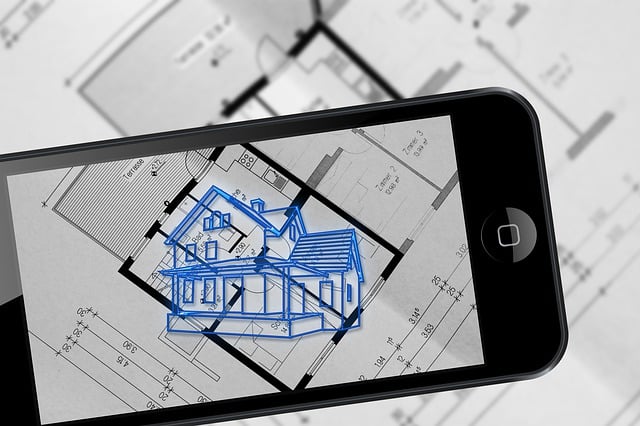Building permit drawings are essential for successful construction, serving as blueprints for aesthetic and functional design. Architects and designers interpret these plans to ensure regulatory compliance while realizing creative visions through interior detailing, exterior facade planning, and material choices that enhance beauty and functionality. Every element, from moldings to wall paneling, contributes to a harmonious blend of art and practicality, transforming buildings into captivating works of architectural art.
“Elevate your understanding of aesthetic appeal in architecture with this comprehensive guide. From the initial interpretation of building permit drawings to the final touches, we explore the art of facade and interior detailing. Discover how meticulous design choices transform structures into stunning visuals.
Learn about the significance of facade detailing in creating lasting impressions and explore various interior detailing techniques that enhance beauty and functionality. We also delve into the harmonious balance between permits, aesthetics, and construction practices.”
Understanding Building Permit Drawings: The Foundation of Aesthetic Design
Understanding Building Permit Drawings: The Foundation of Aesthetic Design
When embarking on a renovation or construction project, one of the critical initial steps is to thoroughly comprehend the building permit drawings. These detailed plans serve as the blueprint for any structure’s aesthetic and functional design. Every line, dimension, and specification within these drawings holds significance, ensuring the final product aligns with both regulatory requirements and creative vision.
Building permit drawings provide a comprehensive overview of the proposed construction, including exterior and interior details. For interior detailing, they specify material choices, finishes, and layout, forming the very essence of aesthetic appeal. By understanding these drawings, architects, designers, and builders can interpret and translate the desired design elements, ensuring every facet—from facade treatments to intricate interior features—meets both legal standards and visual expectations.
The Power of Facade Detailing: Creating a Stunning First Impression
The exterior facade of a building is often the first thing that catches the eye, setting the tone for the overall aesthetic appeal. It’s like a gateway, inviting passersby to experience what lies within. Therefore, meticulous planning and execution in facade detailing are essential to create a stunning first impression. Every element, from the choice of materials to intricate design patterns, contributes to the building’s character and charm.
A well-designed facade goes beyond aesthetics; it can also impact the building’s functionality and energy efficiency. Strategic use of different materials like stone, metal, or glass not only adds visual interest but also provides solutions for natural light infiltration, temperature regulation, and protection from external elements. These considerations are crucial during the building permit drawings phase, ensuring that the final product not only meets regulatory standards but also stands as a beautiful architectural statement.
Interior Detailing Techniques for Enhanced Beauty and Functionality
The interior detailing of a space is an art that transforms raw architecture into a visually stunning and functional environment. It involves adding intricate elements, textures, and finishes to walls, ceilings, and floors, enhancing both aesthetics and usability. Techniques such as moldings, baseboards, and crown molding not only frame windows and doors beautifully but also provide structural definition, drawing the eye and creating a sense of sophistication.
Furthermore, interior detailing can include innovative features like built-in shelves, custom cabinetry, and intricate wall paneling, all of which contribute to a space’s unique character. These elements, when carefully designed and executed, ensure that a building’s exterior (as depicted in building permit drawings) and interior create a harmonious whole. By blending beauty and practicality, interior detailing elevates the overall experience of occupying and interacting with a space.
Balancing Permits, Aesthetics, and Construction: A Comprehensive Approach
In the pursuit of creating visually stunning spaces, balancing permits, aesthetics, and construction is an art. Every detail, from the façade to the interior, must be meticulously planned and executed to achieve harmony. Architects and designers play a pivotal role in this process, ensuring that building permit drawings align with creative vision while adhering to structural integrity and local regulations.
This comprehensive approach involves intricate coordination. Exterior aesthetics, whether modern or traditional, require careful consideration of materials, colours, and textures. Meanwhile, interior detailing must complement the overall design philosophy, enhancing functionality and creating a captivating environment. Striking this delicate balance ensures that the final product not only meets legal requirements but also captivates the senses, transforming spaces into works of art.
In conclusion, achieving both aesthetic appeal and functional design in a structure requires a deep understanding of building permit drawings, meticulous facade detailing, and thoughtful interior finishing. By mastering these elements, from initial planning to final construction, professionals can create spaces that captivate the eye and delight the senses, ensuring a stunning first impression that stands the test of time. Each aspect—from the exterior’s captivating facets to the interior’s harmonious design—plays a crucial role in crafting a true masterpiece.
